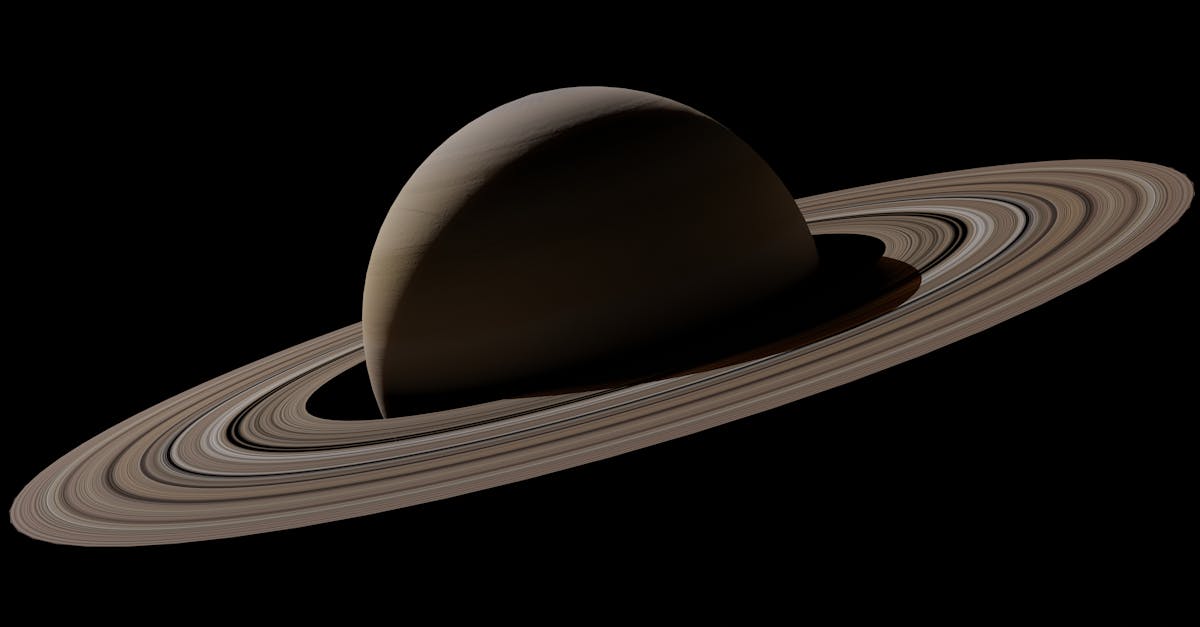Saturn: The Jewel of Our Solar System
Saturn, often seen as the jewel of our solar system, captures our imagination just like a mesmerizing painting might draw your eyes in a gallery. Its stunning rings and presence that lights up the night sky inspire wonder in everyone, from scientists to dreamers. These glorious rings have led many generations, like a siren’s call, to delve deeper into the mysteries of space. Known for its gleaming golden color and its eye-catching striped appearance, Saturn is not only a visual delight but also an essential subject for scientists eager to comprehend our place in the cosmos. In this exploration, we’ll journey through the charm and complexity of Saturn, unveiling the scientific marvels behind its rings, unique features, and the space missions that have illuminated its secrets.
As we embark on this adventure, let’s discover the story behind the creation of Saturn’s rings, spotlight significant astronomical missions such as Cassini, and investigate how Saturn’s moons add to its charm. Join us as we navigate through the wonders of this magnificent planet!
The Formation of Saturn’s Rings
Saturn’s rings are like a cosmic necklace, made up mostly of countless icy particles that vary in size—some are as tiny as grains of sand, while others are as large as rocks. Believed to have formed around 4.5 billion years ago, these rings are thought to be remnants of comets, asteroids, or even moons that were pulled apart by Saturn’s strong gravitational embrace. A study by NASA reveals that the rings are in a constant state of flux, changing as the icy material collides and clumps together, resulting in the beautiful structure we admire today.
Modern astronomical models indicate that Saturn’s rings can be divided into three main sections: the A, B, and C rings. The A ring, which stretches farthest from Saturn, is relatively narrow and packed tightly with material. The B ring shines brightly and is the thickest among them, while the C ring appears faint and lies nearest to the planet. Understanding how these rings interact not only sheds light on Saturn but also provides insights into the formation of other celestial bodies, like pieces of a cosmic puzzle.
The Cassini Mission: Revelations About Saturn
The Cassini-Huygens mission, which launched in 1997, revolutionized our comprehension of Saturn and its intricate family of moons and rings. Over its 13-year journey, the spacecraft sent back breathtaking photos and crucial data, revealing new secrets about this captivating planet.
One of the mission’s groundbreaking discoveries was the detection of immense, global storms on Saturn, similar to gigantic hurricanes we see on Earth. Additionally, Cassini explored Titan, Saturn’s largest moon, which boasts lakes of liquid methane and a thick atmosphere that might just have conditions suitable for life. The ingenious design of the Cassini spacecraft allowed us to traverse new frontiers of knowledge, making significant contributions to planetary science.
The Role of Saturn’s Moons
Saturn enjoys a variety of moons, each contributing unique knowledge about the planet. For example, Enceladus, one of its smaller moons, is famous for its geysers that continuously sprout plumes of water vapor and ice, sparking curiosity about potential life lurking beneath its icy shell.
On the other hand, moons like Mimas and Tethys present fascinating surface details that help us understand impact geology better. Each of these moons influences Saturn’s rings through their gravitational interactions and continuous movement, adding to the dynamic splendor of the Saturnian system.
The Science of Saturn’s Atmosphere
Saturn’s atmosphere dazzles with its stripes, created by differences in rotation, and its complicated weather patterns. Mostly composed of hydrogen and helium, the atmosphere also contains trace amounts of methane, ammonia, and other gases.
“Saturn’s atmosphere exhibits the most extensive cloud systems in the solar system,” says astronomer Leigh Fletcher from the University of Leicester.
This intriguing planet experiences fierce storms that can produce winds of up to 1,100 miles per hour. The vibrant colors we see in images are caused by different chemical compositions at various altitudes, giving rise to unique shades and cloud formations.
Saturn: A Symbol of Cosmic Beauty
The splendor of Saturn transcends merely visual appeal; it symbolizes humanity’s enduring pursuit of knowledge and exploration. Observing Saturn inspires thoughts about our role in the universe while fostering a profound connection to the cosmos. The ongoing research and missions targeting Saturn enhance our understanding of planetary science and the dynamics of celestial bodies.
As we push forward in our exploration of the solar system, Saturn continues to shine like a beacon of curiosity and astonishment, enchanting both astronomers and aspiring space travelers.
The Future of Saturn Exploration
Looking ahead, future missions to Saturn promise to build upon the foundation laid by Cassini. Planned explorations envisage a return to Enceladus to investigate the possibility of life beneath its icy surface and to delve deeper into its enigmatic terrain.
Investing in the pursuit of Saturn’s mysteries will yield invaluable insights for planetary science while offering profound revelations about the history and evolution of our solar system.
Conclusion: Saturn’s Eternal Allure
In conclusion, Saturn’s allure lies not only in its magnificent rings but also in its dynamic atmosphere, diverse moons, and significance in scientific inquiry. Important takeaways from our exploration of this magnificent planet include the understanding of how its rings function, groundbreaking findings from the Cassini mission, and the intriguing potential for life on its moons.
Saturn will forever stand as a symbol of human curiosity and the spirit of exploration. As we gaze upon the night sky, witnessing Saturn’s magnificence, we are reminded of the infinite possibilities awaiting our journey through the cosmos.
